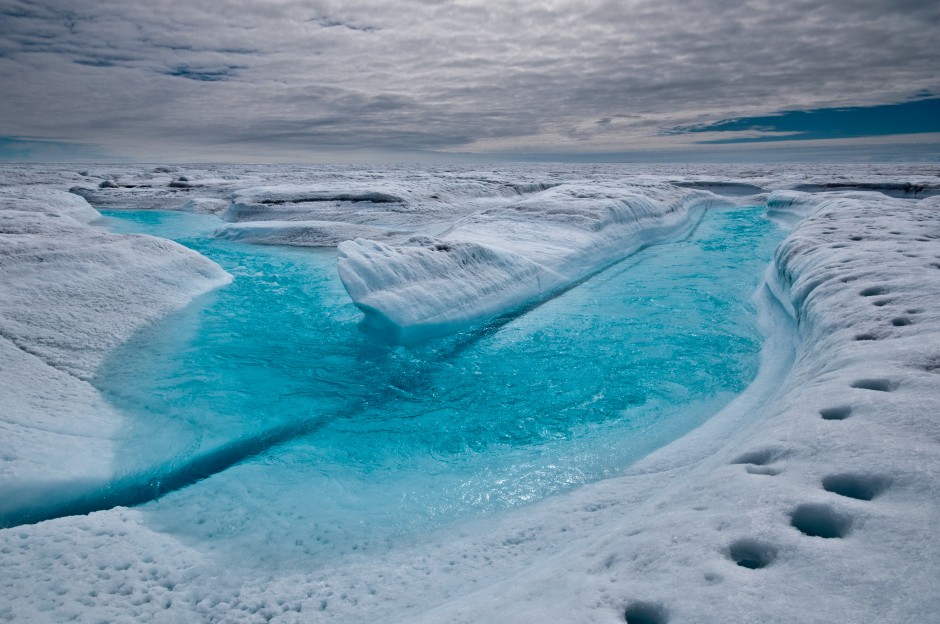
Melt Stream, Greenland by Ian Joughin, distributed by the EGU under a Creative Commons license.
Supraglacial lakes are created when water forms in depressions on top of a glacier, remaining there until it dissipates by seeping through crevasses, or cracks in the ice sheet. Despite their sometimes impressive size, supraglacial lakes may drain in a matter of hours under the right conditions, when the pressure they exert on the ice causes it to crack creating a sometimes spectacular lake draining event.
Draining of supraglacial lakes may have important environmental consequences and may even, as warming temperatures further increase meltwater volumes, affect rates of sea-level rise by accelerating the rate by which ice sheets slide into the ocean.
Dr Ian Joughin, from the University of Washington Polar Science Center, took this breathtaking photo under freezing conditions, earning him the 1st Prize at the 2012 General Assembly photo competition. He explains, “This image was taken as part of a project investigating the rapid drainage of supraglacial lakes in Greenland. Each year, these lakes, which often are a few kilometers across and 10 or meters deep, fill with melt water. If the water can find an open crack, it fills the crack and the greater density of water relative to ice allows it to hydro-fracture through the full thickness (~1 km) of the ice sheet, causing the entire lake to drain rapidly (< 2hours). This picture shows a large melt stream that we encountered as we were out exploring the lake basin, and it is only one of many streams feeding the lake.”
Imaggeo is the online open access geosciences image repository of the European Geosciences Union. Every geoscientist who is an amateur photographer (but also other people) can submit their images to this repository. Being open access, it can be used by scientists for their presentations or publications as well as by the press. If you submit your images to imaggeo, you retain full rights of use, since they are licenced and distributed by EGU under a Creative Commons licence.
